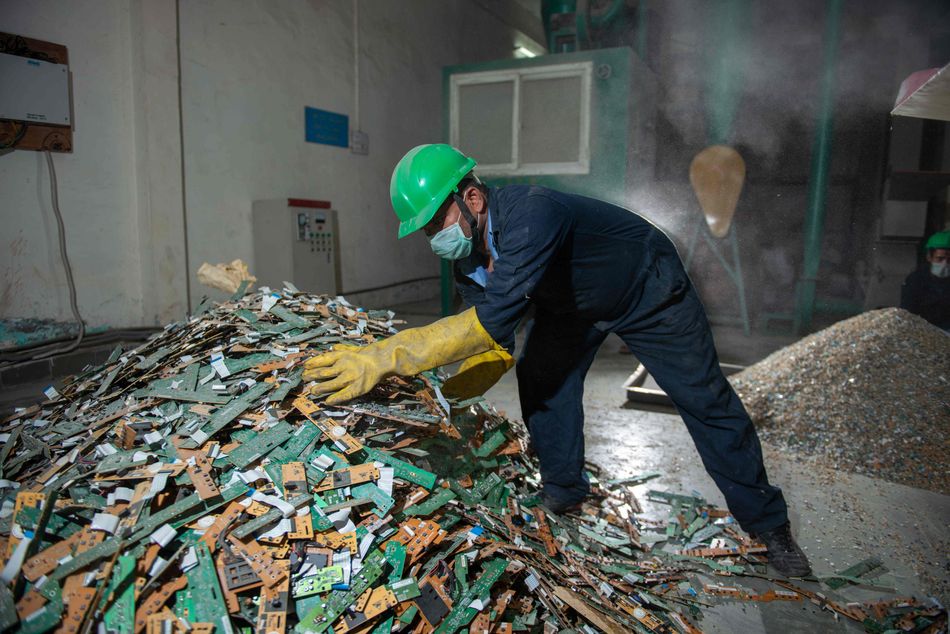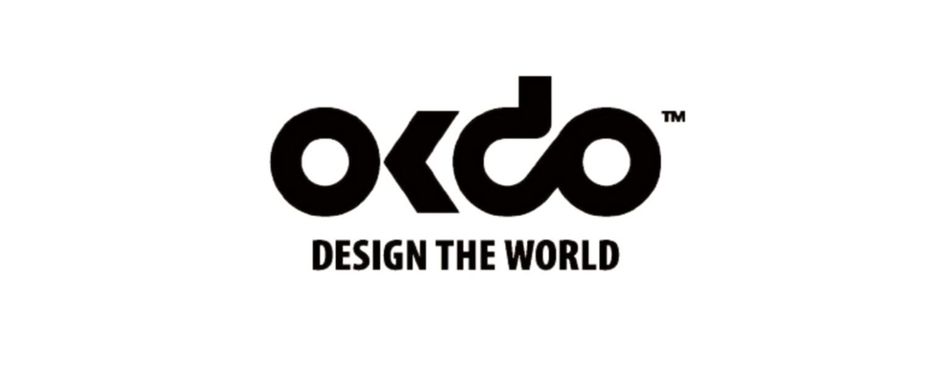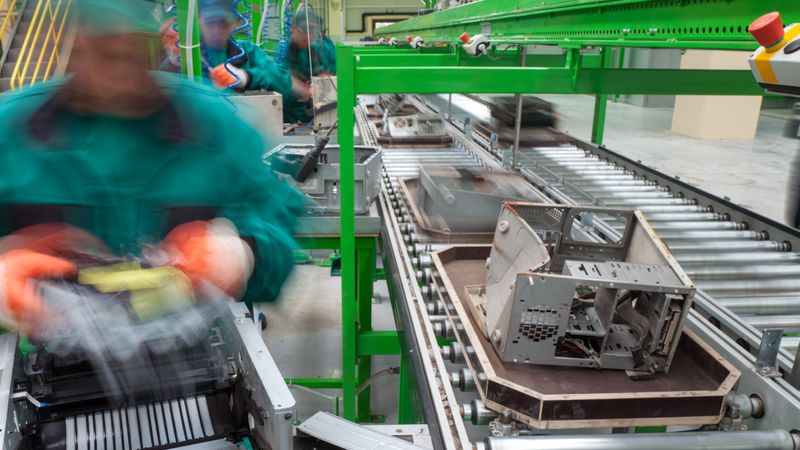The future of sustainable electronics
Article #2 Electronics Innovation Series. A sustainable electronics future must be driven by manufacturers and supported by suppliers.
This is the second article of a 6-part series looking at innovation in the electronics industry.
From smartphones to laptops to wearable devices, electronics have become an essential part of our daily lives. This explosion in devices has led to a global consumer electronics market worth an estimated $1 trillion (and rapidly growing). However, although these devices are often made of durable materials such as plastics and metals, they are often treated as disposable and discarded after use, generating huge amounts of waste.
Electronics are now the world’s fastest growing waste stream, with an estimated 57.4 million tonnes (around 63.3 million US tons) in 2021 – an amount outweighing the world’s heaviest human construction, the Great Wall of China. E-waste is growing around 3-4% each year, expected to hit 74 million tonnes (81.6 million tons) by 2030.
E-waste may represent only 2% of solid waste streams, yet it can represent 70% of the hazardous waste that ends up in landfills. In landfills and other waste facilities, e-waste is often burned, dismantled, or melted without proper equipment or protection, leading to severe health hazards to those who come into contact with it, as well as environmental pollution to the planet at large.
E-waste also represents a huge waste of resources. This waste stream contains prematurely-discarded products and raw materials (primarily iron, copper, and gold) valued at nearly $60 billion. According to Dr. Ruediger Kuehr, director of the UN’s Sustainable Cycles (SYCYCLE) programme, “a tonne of discarded mobile phones is richer in gold than a tonne of gold ore,” and “embedded in 1 million cell phones are 24 kg of gold, 16,000 kg of copper, 350 kg of silver, and 14 kg of palladium — resources that could be recovered and returned to the production cycle.” Recovering these metals from electronic waste would also cause fewer greenhouse gas emissions (GHG) than mining for new materials.
The Urgency of Creating a Sustainable Electronics Industry
Despite these problems, only around 17.4% of global e-waste is formally collected and recycled. The problem lies in our current linear “take, make, and dispose” model for electronics, which must give way to a more sustainable system if we want to continue to enjoy the utility of our electronic devices. The traditional linear economic model relies on large quantities of cheap, easily accessible materials and energy, does not take waste into account, and practices strategies such as planned obsolescence, where products are designed to have limited lifespans to encourage repeat buying by consumers.
To fix these issues, the electronics industry needs to work towards a circular economy. The circular economy is “a model of production and consumption, which involves sharing, leasing, reusing, repairing, refurbishing and recycling existing materials and products as long as possible.” The life cycle of products is extended, and waste is reduced to a minimum. When products reach the end of their life cycle, materials are kept in the economy whenever possible.
Circular business models allow companies to create value through resource efficiency and extending the lifespan of products and their components. These models can unlock new economic opportunities for businesses, with new business models and the more efficient use of raw materials. But even more urgently, a circular economy in electronics is necessary to avoid resource depletion, environmental degradation, health impacts, as well to support the broader transition towards a Net Zero economy to minimize the impacts of GHG-induced climate change.
Challenges Towards Achieving a Circular Economy in Electronics
However, transitioning today’s electronics industry to a circular economy is not without its challenges. These include:
Material complexity. Electronic devices can be composed of more than 1,000 different materials and for complex electronics, up to 60 different elements from the periodic table. This complexity can make recycling tricky. Recycling technologies are continuously improving, increasing the yields and lowering the environmental impact of recycling methods. However, product design must allow for the identification and separation of materials, and strict collection standards must be kept to ensure different material streams are kept separate.
Supply chains and logistics. Global supply chains are predominantly set up in unidirectional production-to-consumer linear flows that move materials from manufacturers to consumers around the world. These supply chains need to be reconfigured to support the collection and transport of products and materials for repair, reuse, and recycling in a circular fashion.
Incentives and standards. Circular business models are still nascent, and capturing residual value is key to reaching a circular economy for electronics. New business models, such as where the manufacturer retains ownership and leases the device, have been promising in incentivizing recovery and reuse. Consumers must also be incentivized to return end products. Additionally, public policy in this area is also in a nascent stage, and can further not only the development of new incentive structures, but the development of information-sharing standards to provide transparency around device and material conditions and recovery potential.
Consumer perception. While many consumers are becoming more aware of the environmental impact of their purchases and are looking for more sustainable options, there is still a common perception that the use of recycled materials means a product is of lower quality. For consumer devices, the recycled, reused, and refurbished materials may be avoided due to this perception of inferior performance or greater risk of malfunction. There may also be data safety concerns about returning devices. Many of these issues can be addressed through guarantees and transparency in the secondhand market, as well as brands targeting leading-edge user segments with new circular products and business models.
How to Move Towards a Circular Economy in Electronics
Tackling these challenges and moving electronics away from the take, make, and dispose model will require changes at every stage of production, distribution, and consumption. Industry, governments, and civil society organizations all have a role to play in helping create a circular economy for the electronics industry.
Some of the major steps industry can take to facilitate this transition include:
Designing products with circularity and sustainability in mind. Transitioning towards a circular economy requires transforming every stage of a product’s life cycle. Manufacturers should start with the end in mind, designing products to be easy-to-upgrade, easy-to-repair, and easy to disassemble for recycling. Some of the most important design requirements include:
- Using more recycled materials in new products, as well as materials which are easier to recycle.
- Improving modularity and the ability to disassemble products, minimizing strong adhesives and blended components, so that components can be more easily harvested and recycled at end of product life.
- Designing for durability and repairability, avoiding planned obsolescence models and designing products for the long run.
Collecting and recycling products at the end of consumer use. For most electronics manufacturers, their relationship with their product ends once in the hand of the consumer. Manufacturers need to set up the reverse logistics necessary to collect used devices or components from consumers, so that they can either be refurbished or recycled.

Circulating refurbished products to new user groups and applications. Once used products and components are collected, there may be a variety of potential pathways for the used components. For devices which can be refurbished, they can be resold at a lower price to lower end consumers, expanding access to new user groups. Another example is the growth in demand of electronic components from the burgeoning Internet of Things. Basic components such as screens, batteries, sensors, hard drives, and chips can be repurposed from high performance applications to lower ones, keeping components in use for longer and reducing the demand for new components (and resources).
Improving industrial symbiosis and materials sourcing. For certain materials such as steel, it can be challenging to convert e-waste materials into usable supplies for new electronic components. In such cases, there is a need for collaboration between different industries to exchange recyclable and waste materials, known as industrial symbiosis. Successful examples of cross-industry collaboration on this include Lime recycling used scooters into consumer electronics, or Dell used scrap carbon fiber from the aerospace industry to create carbon fiber-reinforced polycarbonate bases for laptops.
Exploring new circular economy business models. To achieve a circular economy in electronics, new business models and incentive structures must be developed to incentivize both manufacturers and consumers. Examples include business models that lease electronics instead of sell them, such as the Berlin-based startup Grover, which offers a subscription model for consumer electronics. Other examples include improving refurbishment and resale networks beyond informal p2p sales on sites such as eBay, or networks such as O2 which allow customers to trade in old phones which are then refurbished and sold on with a 12-month warranty.
Sustainable Electronics in Action: OKdo Renew
One example of putting these principles into action include the Okdo Renew program. In July 2021, OKdo, in partnership with the Raspberry Pi Foundation and the Sony Technology Centre, launched OKdo Renew, the first official scheme to renew used Raspberry Pi boards in the UK. This program allows customers to send their used boards back to OKdo for free in return for a £10 off voucher for their next purchase. Boards are sent to the Sony Technology Centre where they were originally manufactured, and then fully tested, reconditioned, and renewed using recycled packaging, before being resold at a discounted price. OKdo offers a 12-month warranty on all resold boards, as well as makes a donation to the Raspberry Pi foundation for each board sold.
OKdo Renew is designed to promote electronic waste recycling and reduce the environmental impact while also offering a more accessible route to them by selling refurbished boards at a lower price. While the program so far has been focused on makers and engineers, OKdo plans to expand OKdo Renew globally and focus on helping larger businesses with their sustainability ambitions and support component shortages.
According to Richard Curtin, OKdo’s SVP of Technology, “With the global population predicted to approach 9 billion people by 2030, we are using more resources than the planet can provide.Our future depends on reusing what we have in a sustainable way. Fortunately, one resource that is unlimited is innovation, and that’s exactly why OKdo has developed this innovative circular economy initiative to recycle, refurbish and reuse Raspberry Pi’s. The scheme will aim to begin the recycling of a proportion of the 40 million Raspberry Pi’s in circulation today that are pre-loved but no longer used.”
This is the third article of a 6-part series:
Article 1 looked at supply chain resilience.
Article 2 examined the future of sustainable electronics.
Article 3 surveys current smart office trends.


